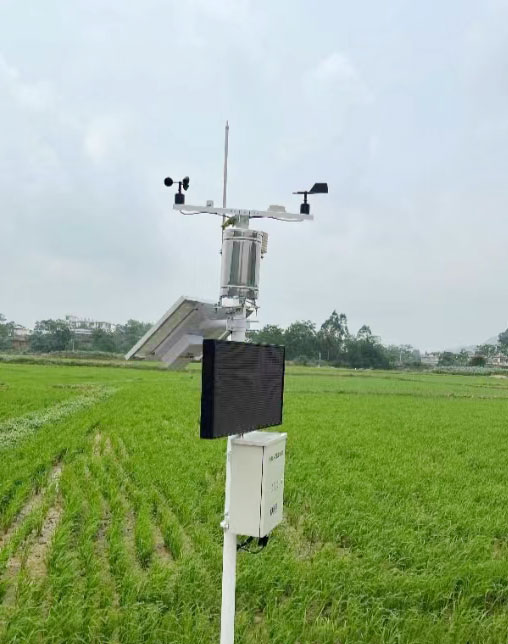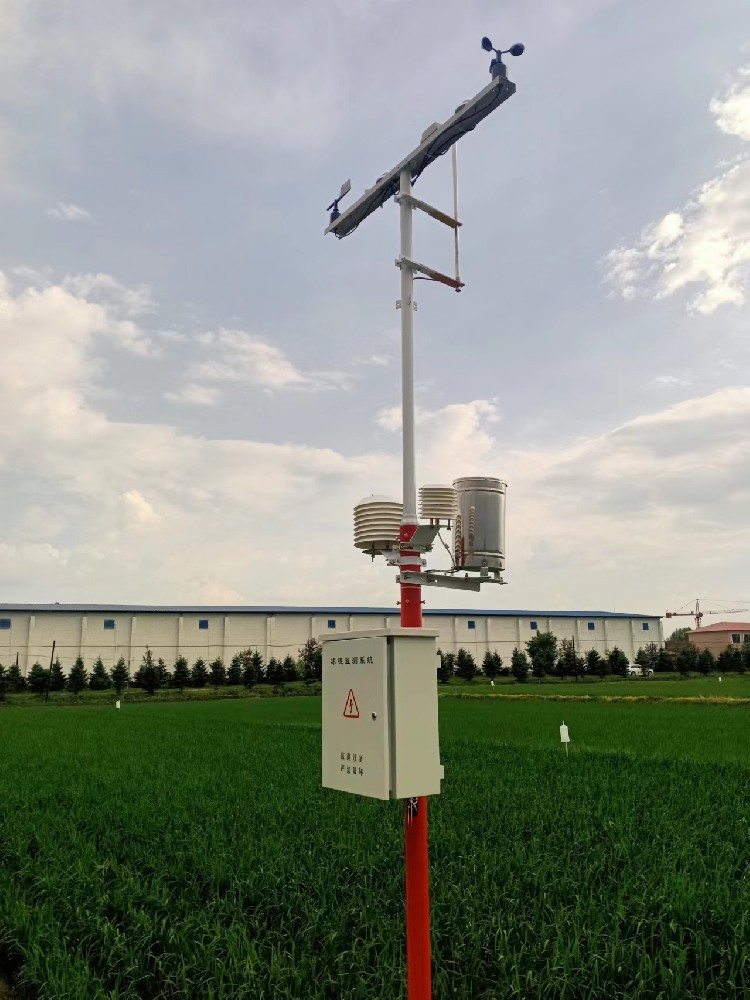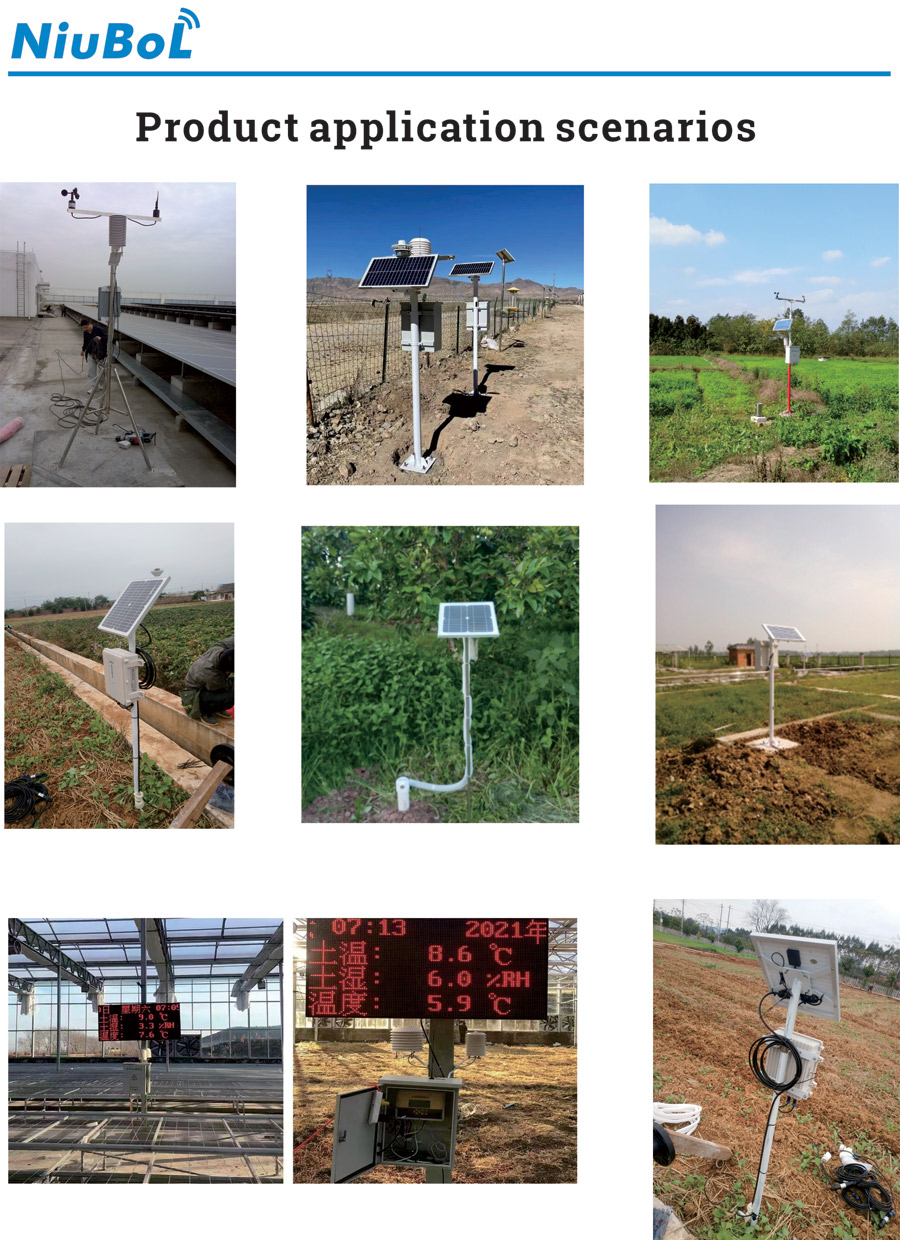

— Blogs —
—Products—
 Consumer hotline +8618073152920
Consumer hotline +8618073152920 WhatsApp:+8615367865107
Address:Room 102, District D, Houhu Industrial Park, Yuelu District, Changsha City, Hunan Province, China
Product knowledge
Time:2024-09-01 17:57:00 Popularity:252
An Agricultural Monitoring Weather Station is an automated system that integrates multiple sensors and data acquisition equipment specifically designed to monitor and record key meteorological parameters in the agricultural production environment. These parameters include, but are not limited to, temperature, humidity, wind speed, wind direction, rainfall, solar radiation, soil temperature and moisture, and atmospheric pressure. By collecting and analysing these data in real time, the Agricultural Monitoring Weather Station provides a scientific basis for agricultural production and helps farmers and agricultural managers make more accurate decisions.
- Real-time monitoring: The Agricultural Weather Station is able to monitor environmental data in real-time. When pre-set warning values are reached, such as extreme weather conditions, the system will automatically issue an alert to remind managers to take preventive measures, such as reinforcing facilities and adjusting crop protection strategies, so as to reduce the damage caused by natural disasters to crops.
- Precise Response: With advance warning, farmers can take timely measures such as irrigation, fertiliser application, pest control, etc. to avoid or mitigate the impact of unfavourable weather conditions on crop growth.
- Extreme weather warning: Early warning of extreme weather events, such as frost, drought and flooding, to reduce agricultural losses.
- Climate change response: provide data support to help farmers adapt to the impacts of climate change.
- Resource optimisation: monitoring climate factors and soil physical and chemical properties, combined with the physiological and ecological characteristics of crops, to accurately grasp the timing and amount of fertiliser application, avoiding excessive use of fertiliser and reducing environmental pollution, while increasing crop yields.
- Irrigation efficiency: automatically adjusting the irrigation system according to soil moisture and meteorological conditions, avoiding ineffective irrigation, saving water and reducing agricultural costs.
- Pest control: Knowing the meteorological conditions helps to predict the occurrence of pests and diseases and take timely measures to prevent and control them.
- Planting time: Based on meteorological data, the best planting time can be determined to improve crop yield and quality.
- Crop selection: Different crops have different needs for climatic conditions, and the data provided by weather stations can help select the most suitable crops.
- Crop growth monitoring: By monitoring temperature, light, wind speed and other data, it is possible to assess the crop growth environment and adjust planting measures in time to promote healthy crop growth.

- Intelligent control: Achieve intelligent automated irrigation, remote monitoring and management, reduce reliance on manual labour, solve the problem of agricultural labour shortage, and reduce labour intensity and cost.
- Data-driven decision-making: collect and analyse a large amount of environmental data to provide a scientific basis for agricultural decision-making, such as crop planting planning, pest and disease prediction, and crop growth cycle management.
- Flexible deployment: Agricultural monitoring meteorological stations are easy to install and maintain, and can be quickly deployed in different locations as needed to meet the monitoring needs of a large range of farmland.
- Data access: Users can query and browse the data in many ways, including mobile phone APP, web terminal, etc., which is convenient for remote monitoring and data analysis.

- Real-time data collection: the weather station is able to continuously monitor various meteorological conditions in the agricultural environment, providing real-time data for farmers.
- Trend analysis: through long-term data collection, climate change trends can be analysed to help farmers make better decisions.
- Data support: The data provided by weather stations support agricultural scientific research, helping to discover new cultivation techniques and management methods and improve agricultural production efficiency.
- Agricultural weather station is an important part of smart agriculture, which realises the precision and efficiency of agricultural production management through intelligent and informative means.
- It helps to improve the intelligent level of agricultural production and promote the process of agricultural modernisation.

Summary
Agricultural monitoring weather station is an important part of modern agricultural technology, which provides accurate decision-making support for farmers and agricultural managers through real-time monitoring and analysis of meteorological parameters in the agricultural production environment. From disaster early warning to resource optimisation, and from automated management to data-driven decision-making, the agricultural monitoring weather station not only improves the efficiency of agricultural production and reduces the waste of resources, but also plays an important role in disaster early warning, climate change adaptation, and agricultural research, which is of significant value in promoting the sustainable development of agriculture.
Related recommendations
Sensors & Weather Stations Catalog
Agriculture Sensors and Weather Stations Catalog-NiuBoL.pdf
Weather Stations Catalog-NiuBoL.pdf
Related products
 Combined air temperature and relative humidity sensor
Combined air temperature and relative humidity sensor Soil Moisture Temperature sensor for irrigation
Soil Moisture Temperature sensor for irrigation Soil pH sensor RS485 soil Testing instrument soil ph meter for agriculture
Soil pH sensor RS485 soil Testing instrument soil ph meter for agriculture Wind Speed sensor Output Modbus/RS485/Analog/0-5V/4-20mA
Wind Speed sensor Output Modbus/RS485/Analog/0-5V/4-20mA Tipping bucket rain gauge for weather monitoring auto rainfall sensor RS485/Outdoor/stainless steel
Tipping bucket rain gauge for weather monitoring auto rainfall sensor RS485/Outdoor/stainless steel Pyranometer Solar Radiation Sensor 4-20mA/RS485
Pyranometer Solar Radiation Sensor 4-20mA/RS485
Screenshot, WhatsApp to identify the QR code
WhatsApp number:+8615367865107
(Click on WhatsApp to copy and add friends)